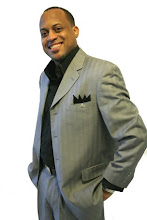My wife and I first discovered
Deer Isle, Maine,about twenty five years ago. I had friends who recommended it and we were
interested in experiencing the “real” Maine, not the “tourist” Maine. We drove most of two days from Philadelphia
staying overnight along the way. When we
reached Portland, we thought we were almost there. When we reached Elsworth, we
were certain it was close by, but it was still an hour’s drive before we
crossed the high green bridge to the island and another 30 minutes before we
reached Stonington the largest community at the southern most tip of Deer Isle.
You might say it’s “off the beaten path.”

Nevertheless, Stonington is a
charming little town with much to offer visitors and permanent residents. Deer
Isle is home to 2,500 people year-round and the number more than doubles in the
summer. The 28 mile-long island was once
a major center for quarrying granite (some is still done) and many of New York
City’s early skyscrapers and the Brooklyn Bridge are of stone from Deer
Isle. Lobster fishing is now the main
business here and like much of rural Maine people often have more than one job.
Stonington’s block long main
street, next to the harbor, has a food market at one end and the century old
Opera House at the other (now an arts center and movie theater). There are a couple of restaurants, a hardware
store, several art galleries, an antique shop, two small motels, and a real
estate office. Summer rentals are big on
the island. Our favorite restaurant is Fisherman’s Friend where they serve a
delicious lobster stew. Lots of lobster
without all the work. Its wild blueberry
pie is the best I’ve ever eaten.
But its hard to beat Eaton’s Pier
at the north end of Little Deer Isle (there are actually two islands connected
by a twisting causeway). They unload
some of the lobster catch from boats here and will boil them for you in 50 gallon
steel barrels with propane burners. You
eat them at wooden picnic tables on the dock.
There are no fancy tools to help you get to the lobster meat, just some
grapefruit size rocks to crack the shells. A roll of paper towels helps keep
you neat. Nothing fancy, just great taste.
 Every Christmas we buy fresh pine
wreaths (handmade by Deer Isle women) for family and friends from Harbor Farm,
a lovely retail business on the island.
See www. harborfarm.com Also see Nervous Nellie’s Jams & Jellies at www.nervousnellies.com and help support the local economy.
Every Christmas we buy fresh pine
wreaths (handmade by Deer Isle women) for family and friends from Harbor Farm,
a lovely retail business on the island.
See www. harborfarm.com Also see Nervous Nellie’s Jams & Jellies at www.nervousnellies.com and help support the local economy.
We were on Deer Isle over the
July 4th and got to see the holiday parade at the island’s other
little community Deer
IsleVillage. It’s less than half the
size of Stonington and has two streets each about a block long. The parade begins at the fire house and
marches to the point where the streets intersect and makes a left turn. In
another hundred yards, it turns around and heads back to the fire house. You
see the whole parade twice, but don’t be late for its over in about ten
minutes.
The parade “Band” a ragtag group
of various musical instruments and ages does not march, but sits at
intersection of the two streets so the music can be heard the full length of
the march. There were fire trucks, kids with decorated bikes, scout troops, and
old veterans. The Haystack School of
Crafts here attracts artists from across the country each summer and they
always take part in the parade. This
year a dozen artists were dressed as giant misquotes in handmade costumes. It was a big summer for pesky insects and the
small crowd of spectators laughed and cheered loudly.
Haystack is one of the treasures
on Deer Isle. Although its only open to
the public for its
craft auctions, which occur in
the evenings near the end of each two week workshop session, its well worth
visiting. Fine crafts (in various craft media) from workshop participants and
faculty are auctioned off to benefit the scholarship program. There are many excellent bargains to be had
by craft enthusiasts and lots of fun for all.
Back in Stonington, a popular
activity is taking the mail boat to Isle of Haut, a few miles away.
A portion of the Isle is now part
of Arcadia National Park and great for nature walks, bird watching, and
hiking. There’s a lovely inn on the
island where you can enjoy a delicious meal, but don’t miss the mail boat back
to Stonington or you’ll be an overnight guest.
There is golfing near Stonington
at the Island Country Club. Rental clubs
are available at this
nine hole, 2,400 yard, par 34
course, open to the public. Stay on the
fairway, however, since the rough is pretty much impossible to navigate. Tee times are first come, first served.
Near Fisherman’s Friend
Restaurant is a sandlotball field where locals of all ages play
ball. After dinner one evening we watched a pickup
game of young kids (both boys and girls of various ages and skill levels, who
shared ball gloves playing field) who were too few for full teams. It was a delightful throwback to the past and
a reminder of my own youth.
Deer Isle has a new high school
and each Spring graduating seniors (about two dozen) paint the first names of
their classmates on foot long pieces of wood and nail them to the telephone
poles along the road into town. No need
for last names, everyone here knows who they are. Its like that in Stonington, Maine.
James Weaver
GolfWiz Blog
Senior Travel Editor




















Orchestra.jpg)







